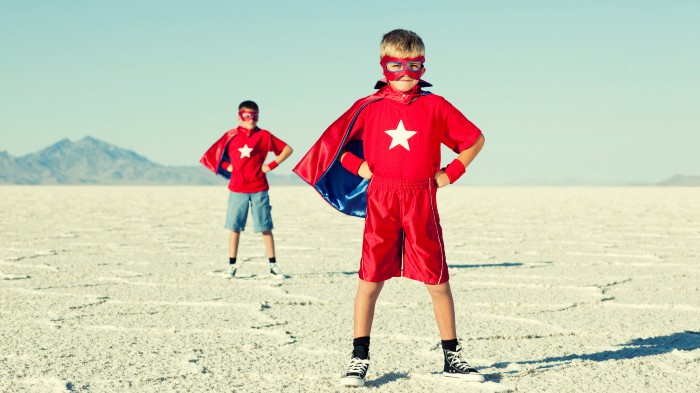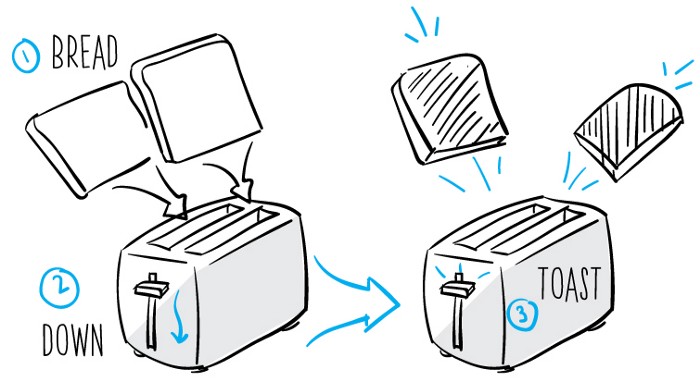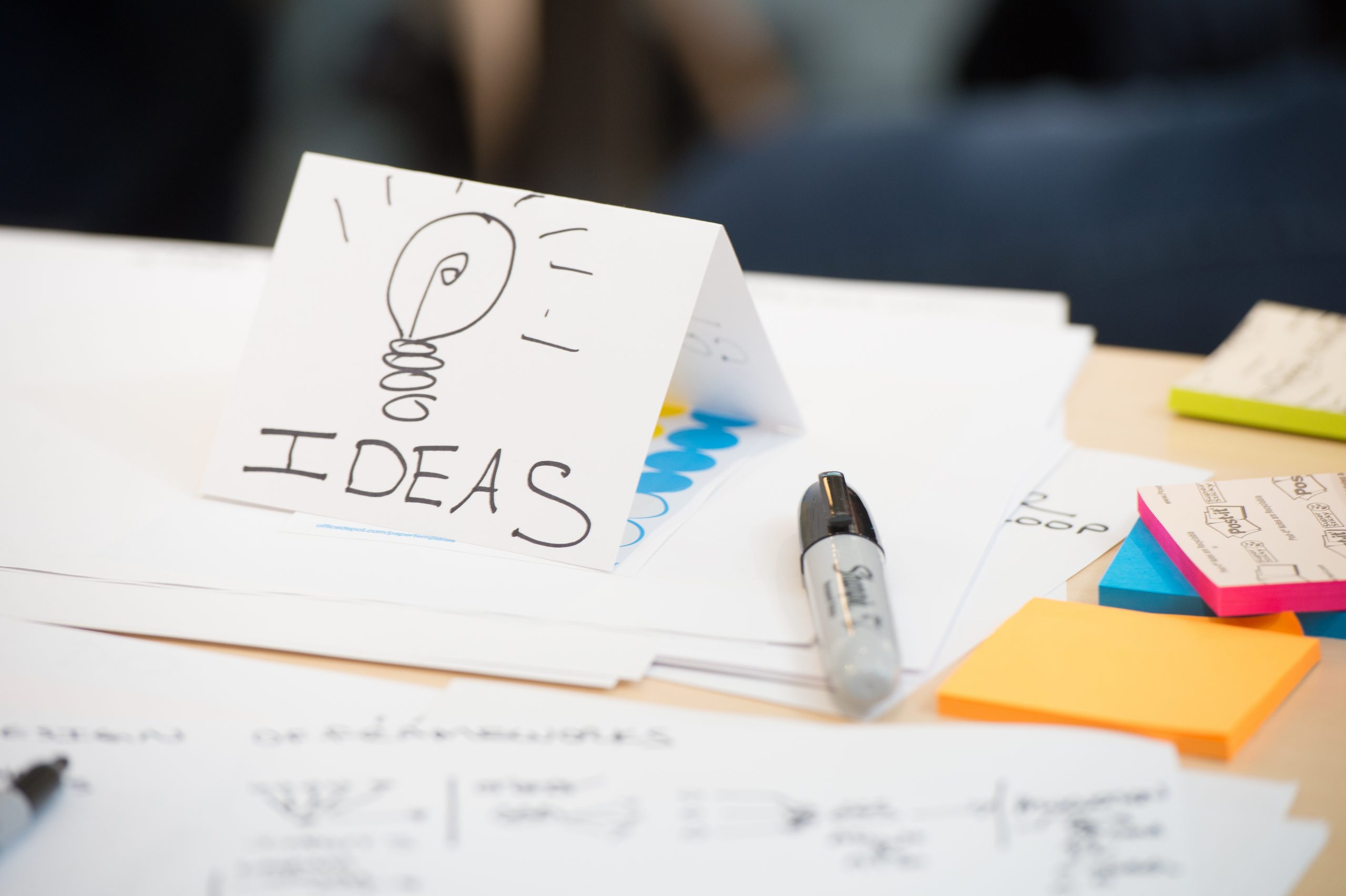Updated: September 27, 2021. This article was originally published on January 21, 2015.
Our discovery sessions, in fact, our entire business, are built on visual thinking. Still, we know that in any session, some people will exchange nervous glances as soon as they see the sticky notes and markers and we mention that everyone will draw.
Drawing and visuals activate different parts of the brain. We know this from science and our experience supports it. We see it during every one of our discovery sessions. We live it as a company. We witnessed it just last month at Fast Company’s Innovation Uncensored event in San Francisco.
We’ve also learned that if people draw something, anything, at the start of the day, the interaction for the entire day changes. Not only have they activated different parts of their brain, importantly, but their drawing also helps tell a very different story than they’d ever tell without it.
And yes, everyone can draw. Stick figures, arrows, and boxes all tell a story.
To get the ink flowing, we’re offering up three kick-ass visual icebreakers:
Visual Icebreaker 1: Superheroes

We believe everyone has a work superpower. It might be leading a project, supporting team members, or working with complex spreadsheets. Before introductions, we often ask people to draw themselves using their superpower. Then, each person introduces him or herself in the context of the thing they do best.
This works well with teams who may not know each other very well and allows them to share something with pride that might not come up in conversation any other way.
Visual Icebreaker 2: Toast

Tying an icebreaker to the larger goal for the day can help launch a session. When we work with teams on process design we often start by asking them to draw their own process for making toast.
It seems like a common task, but as each person presents his or her drawing, we see the process slightly differently. Some start with plugging the toaster in and some include slicing bread. Some start by jumping right to a plate and jam. Everyone has their own method.
This is a good way to demonstrate that even with common processes, we see them slightly differently and why seeing them visually aids in understanding them.
Visual Icebreaker 3: Show and Tell
Sometimes we ask people to bring an object or artifact to the discovery session that represents a personal or professional story. Then as we start the session, we have them show it and tell us the story.
Pixar offered a memorable explanation for why this is successful at its session at Innovation Uncensored. Pixar executives said that great stories have a strong emotional core. That core comes through when people focus on an object and begin to tell their story. The object serves as a visual focus and helps people lose their self-consciousness and slip into compelling and engaging storytelling.
Do you have a go-to visual icebreaker? We would love to hear about it.
Additional Drawing and Visual Thinking Resources
- How Do You Communicate Effectively in the Workplace? Use Visuals.
- Into Thin Air: How Good Leaders Share Their Vision and Inspire Action
- Turn Your Thinking Inside Out: The Path to More Effective Communication and Collaboration
- Webinar Recording – Engage Your Learners: Using Visuals to Enhance Learning and Education
- Webinar Recording: 30 Minutes of Sketch Notes
- Webinar Recording: Draw Your Notes: Yes, You Can Draw
